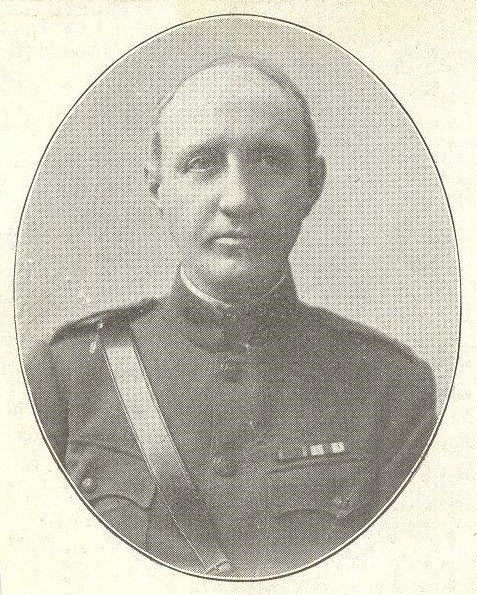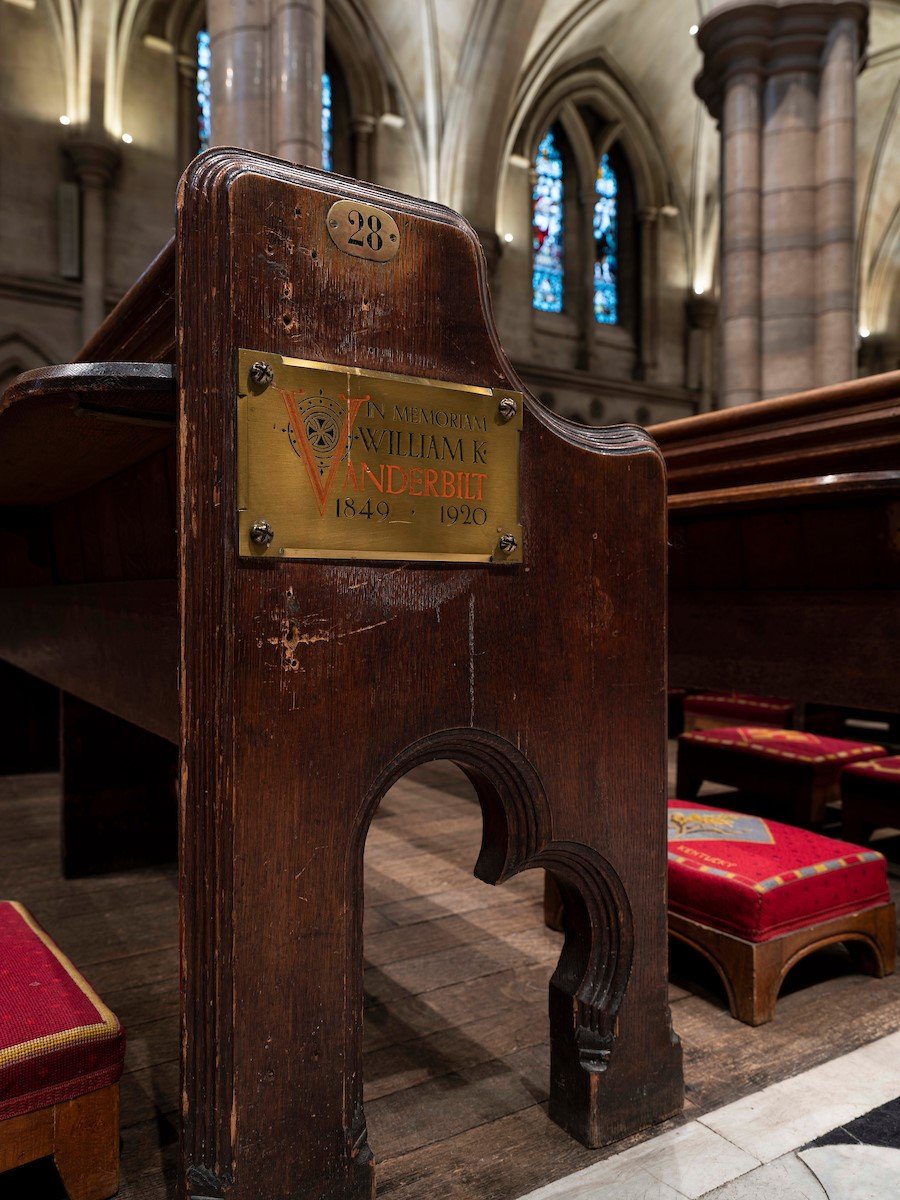Consecration as The American Cathedral 1920-1923
From the moment of construction of the soaring Neo-Gothic Holy Trinity church, there was a vision of it as a cathedral. When Bishop Thomas Augustus Jaggar filled in at Holy Trinity in 1912-13, after the sudden death of Rev. John B. Morgan, he and the vestry discussed the possibility of Holy Trinity becoming a cathedral. There were seven Episcopal churches in Europe at the time, but no cathedral or resident bishop to lead them.
“To have a permanent bishop-in-charge it had long been thought desirable,” vestry notes for the meeting attested, quoting Jaggar in defining Holy Trinity’s role: “It holds a place, not only in relation to our whole Episcopal Church, but to our common Christianity, and to the historic church in its purity, which gives it a strategic importance second to none in our whole communion.”
Bishop G. Mott Williams in miter.
Before any steps could be taken, Holy Trinity first had to become a free church. As a cathedral, it could no longer ask parishioners to pay an annual fee to reserve a seat in church. Operating funds would have to be found elsewhere. Bishop G. Mott Williams (1857-1923), explained to the Holy Trinity congregation that pews had been sold, rented, inherited, taxed, and otherwise used to produce revenue in the wake of the American Revolution.
“The old system, we found, limited our welcome, burdened or excluded the poor, and suggested to the rich something much less than their duty,” Williams said. “As these things were realized, the old system was first supplemented and then replaced by pure thoughtful, regular and religious giving, advancing to the heights of sacrifice. This is the new spirit we evidence and announce by our action of today.”
The Rev. Frederick Beekman
A committee to consider the free church idea was proposed, but with the arrival of a new rector, Rev. Samuel Watson, came the First World War, and all his attention and care were taken up by the needs of refugees and other war victims. At its close, Watson and his wife returned to the United States, and an army chaplain from Pennsylvania, Rev. Frederick Beekman, was named his successor as rector. Beekman had been Dean of the Nativity Cathedral in Bethlehem, PA, before joining the American Expeditionary Forces in 1917. Less than a week after Armistice was declared in November 1918, the vestry voted to establish a War Memorial and Thank Offering Endowment Committee. The goal was to create both a monument to Americans killed in World War I and an endowment that would support the church. Beekman departed immediately on the first of three lengthy fundraising tours of the United States.
After consulting the congregation, the vestry voted to abolish pew rentals as of November 1st, 1921. At the same time, the church offered pews for endowment, in conjunction with the War Memorial. Wealthy parishioners, including Anne Harriman Vanderbilt and Emily Sloane White, endowed nine pews by August 1921. Today Holy Trinity counts twenty-nine memorial pews.
A Vanderbilt memorial pew today.
With Beekman’s successful fundraising trips, collecting some 600,000 FF ($1.6 million today) between 1920 and 1923, plans for the War Memorial moved forward. A design by architect Bertram Goodhue, with sculptors Michel Tarnowsky and Mahonri Young contributing their work, was approved and the Memorial Battle Cloister was built. Four bays along the cloister wall contain the engraved names of sixty-nine American military and civilian units whose members were among the 116,000 casualties of the war.
In September 1922, Rev. Beekman attended the General Convention of the Episcopal Church in Portland, Oregon, presenting a spread of arguments in favor of a seated bishop for Europe: it would bind the American churches in Europe more closely together, it would oversee the growth of American worship in Europe, and it would provide American Episcopal representation to the European Protestant churches. Nonetheless, the General Convention did not take action to create a resident bishop.
The vestry of Holy Trinity continued its drive, approving unanimously on December 12th, 1922, a resolution to offer the church as the bishop’s seat as a “Pro-Cathedral” (a church holding the bishop’s seat but run by a dean and vestry). Bishop Williams accepted, saying he was “anticipating very happy relations.”
Memorial Cloister dedication.
The consecration of the new American Cathedral was scheduled for January 1923, but Bishop Williams was ill, and it was postponed to March 18th, 1923. Approving cathedral status for Holy Trinity was his final mission: he died a month later, on April 14th, in Paris. At the next General Convention in 1925, Beekman and the vestry re-submitted their arguments for a seated bishop, but no decision was made.
It was not until 1994, when Bishop Jeffery Rowthorn, Welsh-born, Connecticut-based, was named resident bishop-in-charge that Holy Trinity began to fulfill its role at the heart of the convocation. Since then, the original seven churches have grown to nine, along with a dozen missions and congregations across Europe. Bishop Rowthorn served until 2001, followed by the Rt. Rev. Pierre Whalon, who retired in 2019. Bishop Mark Edington is the current resident bishop-in-charge.




